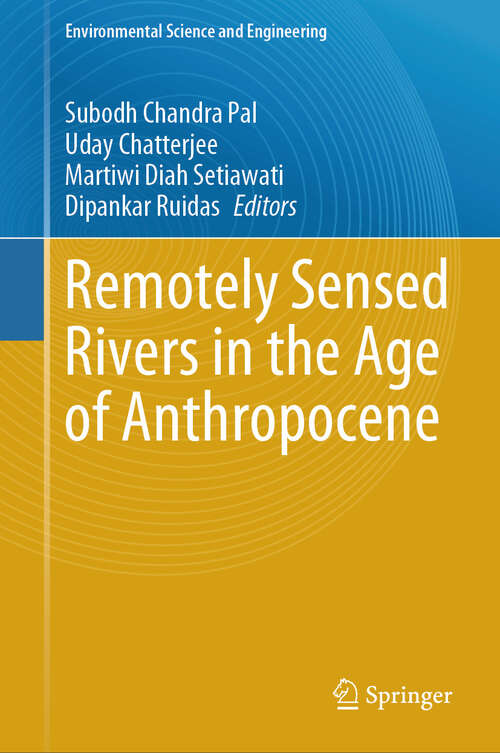Remotely Sensed Rivers in the Age of Anthropocene (Environmental Science and Engineering)
By: and and and
Sign Up Now!
Already a Member? Log In
You must be logged into Bookshare to access this title.
Learn about membership options,
or view our freely available titles.
- Synopsis
- This book offers a geospatial technology approach to data mining techniques, data analysis, modeling, risk assessment, and visualization, as well as management strategies in many elements of river basin risks. This book investigates cutting-edge techniques based on open source software and R statistical programming Google Earth Engine and modeling in modern artificial intelligence techniques, with a particular emphasis on recent trends in data mining techniques and robust modeling in river basin management. It includes significant issues such as geomorphological hazards, climate change, catastrophic natural disasters, meteorological and agricultural drought monitoring, landslides or mudslides (mudflow), floods and flash floods, soil erosion, and land degradation. This book's contents are of interest to earth and environmental scientists, professionals, and policymakers. The book examines spatial modeling, risk evaluation of a drainage basin in the domain of environmental and social issues, management, and associated research. Due to poorly understood climate change and unclear man-made activity, there are several problems and uncertainties in studying earth's environmental circumstances, making it exceedingly difficult to analyze and make knowledgeable judgments. Many difficulties, on the other hand, are caused by mismanagement of present and future land, water, and forestry resources. It is also critical to use new technology and methods to improve and reinforce environmental protection. The link between the three devices, namely remote sensing (RS), GIS, and the R programming interface, is acknowledged in this respect. Land conservation measures, soil and water quality control, and new rules should all rely on correct measurements and predictions, and three technologies (RS, GIS, and R) and open access quantitative forecasting methodologies help with climate change and better management regulations. Nonetheless, this book serves as a feasible framework for studying current breakthroughs in geospatial artificial intelligence technologies and their relevance to the planet's environmental and socioeconomic concerns in a single volume.
- Copyright:
- 2025
Book Details
- Book Quality:
- Publisher Quality
- ISBN-13:
- 9783031823114
- Related ISBNs:
- 9783031823107
- Publisher:
- Springer Nature Switzerland
- Date of Addition:
- 05/02/25
- Copyrighted By:
- The Editor
- Adult content:
- No
- Language:
- English
- Has Image Descriptions:
- No
- Categories:
- Nonfiction, Science, Computers and Internet, Earth Sciences
- Submitted By:
- Bookshare Staff
- Usage Restrictions:
- This is a copyrighted book.
- Edited by:
- Subodh Chandra Pal
- Edited by:
- Uday Chatterjee
- Edited by:
- Martiwi Diah Setiawati
- Edited by:
- Dipankar Ruidas
Reviews
Other Books
- by Subodh Chandra Pal
- by Uday Chatterjee
- by Martiwi Diah Setiawati
- by Dipankar Ruidas
- in Nonfiction
- in Science
- in Computers and Internet
- in Earth Sciences
